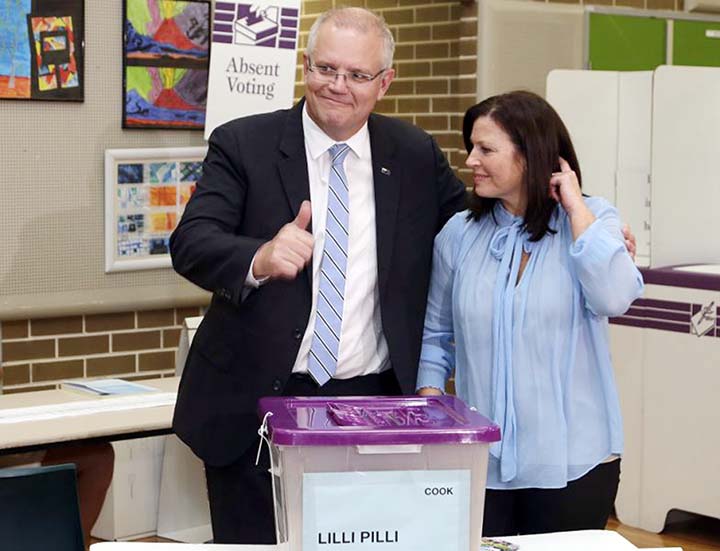
AP, Canberra :
The vote count in Australia’s general election on Saturday was proving closer than opinion polls had predicted, with the ruling conservative coalition appearing more likely to form a government than the favored center-left opposition party.
Opposition Labor Party deputy leader Tanya Plibersek had said in early counting that she was “more cautiously optimistic than confident.” But she predicted a tighter result as counting progressed.
“The only thing you can say about tonight is it’s likely to be a very late night,” Plibersek said. It was not clear whether the results would be available by the end of vote counting on Saturday.
Opinion polls had suggested that the conservative Liberal Party-led coalition would lose its bid for a third three-year term, and that Scott Morrison would have had one of the shortest tenures as prime minister in the 118-year history of the Australian federation.
Opposition leader Bill Shorten said Saturday morning that he was confident Labor would win, but Morrison would not be drawn on a prediction.
Morrison is the conservatives’ third prime minister since they were first elected in 2013. He replaced Malcolm Turnbull in a leadership ballot of government colleagues in August.
Tony Abbott, who became the first of the three conservative prime ministers in the 2013 election, conceded defeat in the Sydney seat he has held since 1994. “The good news is that there is every chance that the Liberal-National coalition has won this election,” Abbott said.
Polling suggests climate change was a major issue in the seat for voters, who elected an independent candidate, Zali Steggall. As prime minister in 2014, Abbott repealed a carbon tax introduced by a Labor government. Abbott was replaced by Turnbull the next year because of poor opinion polling, but he remained a government lawmaker.
Morrison began the day Saturday by campaigning in the island state of Tasmania, where the Liberals were making gains in Labor-held seats. He then flew 900 kilometers (560 miles) home to Sydney to vote and to campaign in Sydney seats.
Shorten contained his campaigning to polling centers in his hometown of Melbourne, where he voted Saturday morning.
He said early in the day that he expected that Labor would start governing from Sunday. He said his top priorities would be to increase wages for low-paid workers, hike pay rates for working Sundays and reduce Australia’s greenhouse gas emissions
Shorten has been campaigning hard on more ambitious targets to reduce Australia’s greenhouse gas emissions.
The government has committed Australia to reduce its emissions by 26% to 28% below 2005 levels by 2030. Labor has promised a 45% reduction in the same time frame.
Shorten, a 52-year-old former labor union leader, has also promised a range of reforms, including the government paying all of a patients’ costs for cancer treatment and a reduction of tax breaks for landlords.
Morrison, a 51-year-old former tourism marketer, said he had closed Labor’s lead in opinion polls during the five-week campaign and predicted a close result.
Morrison promises lower taxes and better economic management than Labor.
Both major parties are promising that whoever wins the election will remain prime minister until he next faces the voters’ judgment. The parties have changed their rules to make the process of lawmakers replacing a prime minister more difficult.
During Labor’s last six years in office, the party replaced Prime Minister Kevin Rudd with his deputy Julia Gillard, then dumped her for Rudd.

